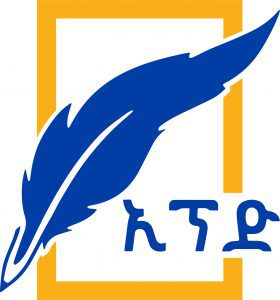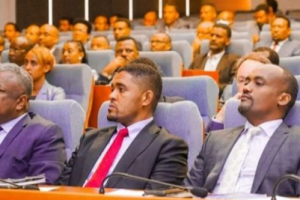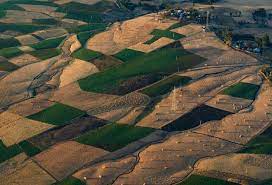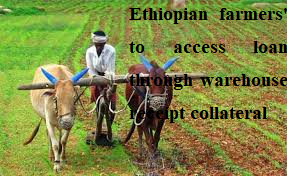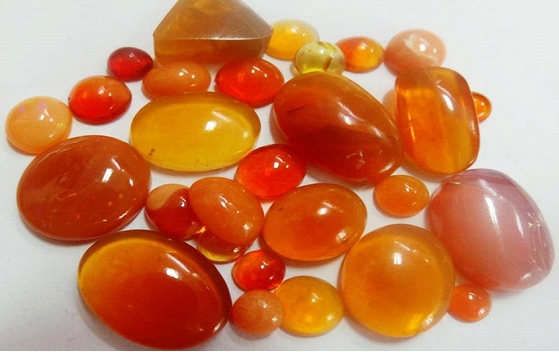
Precious minerals have been popular throughout human history for centuries due to their beauty and unique properties; experts in the field indicate that they are in high demand in our time.
The colors, beauty and charm of the minerals not only attract people’s attention, but they are also known for being made into various forms and given as expensive gifts, bringing great satisfaction to both the giver and the recipient. They are especially well-known abroad and are among the most valuable items.
The trade of precious minerals and jewelry is a globally renowned and lucrative business. Globally, the precious minerals and jewelry sector is worth between 250 and 300 billion Dollars annually. Some Far Eastern countries are also known for their trade. India, Sri Lanka and China are mentioned in this regard.
Many citizens in Ethiopia are also engaged in mining the metals, adding value to the metals and supplying them to the domestic and foreign markets; the country also earns foreign exchange.
According to data, Ethiopia has many types of precious minerals in large reserves. Among them are sapphire, emerald, opal, jasper, obsidian, garnet, amethyst and citrine, opal being an example.
So, what makes precious minerals precious? Experts in the field say that the main reason why minerals are called precious is their discovery. They also explained that they are not found in sufficient quantities compared to other minerals, which is why they are called “precious”.
According to the data, minerals are also divided into precious and semi-precious. Among the semi-precious minerals, jasper, obsidian, garnet, amethyst, citrine can be mentioned. The precious minerals are those that are relatively rare, such as sapphire, emerald, and opal.
When we look at opal among the precious minerals, we distinguish between North Shewa and Delanta opal. These two types of opal are very different; in particular, Delanta opal is at a level comparable to the opal found in Australia. Studies have shown that this opal is of higher quality than Australian opal; experts in the field indicate that it is also highly valued.
There are also some types of opal in other areas. For example, in the Afar region, there is an opal called fire opal. The quality of the opals is determined by the location in which they are found. Minerals such as sapphire and ruby are also much more expensive than opal.
According to Solomon Zeleke, Head of the Marble, Granite and Gemstones Desk at the Mining Industry Development Institute, Ethiopia has more than 40 precious minerals.
The country has the most precious minerals such as corundum, beryl family, sapphire and emerald. Wollo is especially known for producing precious minerals; Wollo opal is being widely used in this area. Solomon noted that these minerals are being offered to the world market in various forms, but the income they generate is very small.
Solomon explained that the sector has become well-known in the country recently; he also noted that they are major drivers of the economy in other countries. There is a lot of wealth in the sector at the global level, and he pointed out that Ethiopia also has a large amount of precious minerals. If the sector can be managed strategically, Ethiopia can also have a share of the wealth in the sector that is moving in the world.
Solomon also pointed out some of the reasons that have prevented the precious minerals sector from reaching this level. The first reason is that the sector was not managed strategically in the past, and the second is that little work has been done to add value to the minerals and market them.
He mentioned that there are good works that have been started to train human resources by opening colleges in the regions to bring the sector forward; he emphasized that this should be strengthened and continued so that the country can compete with the world in the precious metals trade. There is a need to build leading research and certification centers and the like.
The government has prepared a strategy to guide the sector, and that the strategy will provide solutions to many challenges faced by the precious minerals sector and will create an environment to guide the sector.
Zewdu Adgoaichew has long experience in the development and marketing of precious metals. He has also taken various trainings in this regard. He is also the founder of Ethio Delanta Opal and other precious metals exporting organizations. He stated that the sector has been witnessing improvements and encouraging changes in recent times.
He said, “Ethiopia has not paid much attention to these minerals until recently. It has not gone far enough to identify its mineral resources well or to market them at their value. There was no expert who knew the sector well and identified the minerals. As a result, the country has not been able to utilize this resource properly.”
Although the country has not worked extensively on minerals, the society has known their benefits since ancient times and has been using them in various ways for jewelry and other services. Referring to information that minerals were used for various purposes, especially in rural areas, Zewdu explained.
He also pointed out that many researchers and scholars in foreign countries have conducted research and studies because minerals provide various benefits. Although studies indicating this have been conducted in Ethiopia, he pointed out that much work still needs to be done in this regard.
He noted that compared to the previous situation, society is now becoming more aware of minerals, and that although not everyone is a consumer, the interest in learning about minerals is increasing.
He also noted that geomology (the American Institute of Geomology or the Institute of Precious Minerals), which studies precious minerals, has only recently become known in the country, indicating that the sector has not been given much attention in the past. He stated that education in the sector is also provided in combination with other subjects, and that lack of a large number of educated manpower to graduate in the sector is another reason.
There were not many people interested in working in the sector, and this was due to their lack of knowledge about the existence of the mineral, and even if they did, they did not fully understand its benefits. However, as research and studies are being conducted in the sector, and society is becoming aware of its mineral resources, Zewdu pointed out that recently, organizations working in the sector have begun to appear.
Precious minerals are highly sought and expensive; however, their availability is very low. However, finding semi-precious minerals is not very difficult compared to precious minerals.
Zewdu pointed out that there are many ways to identify precious minerals. He also explained that these methods will make the metals competitive in the international market. the quality of precious metals can be confirmed internationally and buyers can find them when they are certified by an organization like GIA and given a certificate label or brand.
“If such institutions exist in our country, we can sell the minerals with our own brand,” he said, adding that all parties involved in the sector should make efforts to make this happen. “I believe that we can be effective if this is done.”
Zewdu further explained that a lot should be done on adding value to precious metals; adding value starts with refining the raw material. After the raw material is refined, it is then shaped into various shapes; it is then used as jewelry and used as ornaments for the neck, ears, hands, head, feet, and so on.
Ethiopia needs to promote its precious minerals to the world and present its own brand products to the world market. It should focus on value addition.
He also noted that it is necessary to promote the products frequently by establishing an online marketing system, and it is necessary to establish a system that will allow the mining sector to benefit.
He mentioned that there are organizations that are working on promoting products by establishing online marketing systems in various African countries; he also pointed out that it would be good if there were organizations that do such work in Ethiopia. He also said that there is a need to work on connecting mineral suppliers and exporters that will benefit them.
The mining of precious minerals in Ethiopia has not yet deviated much from the traditional way, and it will be difficult to continue the sector as desired until the opportunity to use technology can be expanded. Noting that there have been changes in the focus on precious minerals, Zewdu called on both the government and stakeholders in the sector to continue to fulfill their responsibilities in order to benefit more from the sector.
BY BACHA ZEWDIE
THE ETHIOPIAN HERALD TUESDAY 11 MARCH
